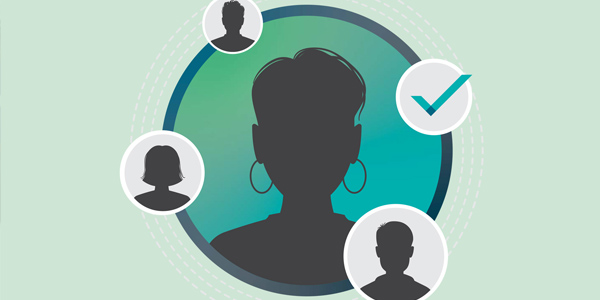Neuroscience has been with us for hundreds of years in some form or other. Scientists first observed people with brain injuries to try and understand the relationship between the brain and behavior.
In the past few decades, however, scientists have made dramatic breakthroughs in our ability to study the brain directly. We can now observe electrical activity or blood flow inside the head, or switch off functioning for a specific region of the brain on demand. The result is an enormous burst of brain research, with thousands of papers published each year.
As of 2015, there are more than 60 peer-reviewed research papers exploring various developments in neuroscience and how they relate specifically to leadership. This is an effort that began in 2007 with the launch of the first NeuroLeadership Summit, which has since become an annual gathering of neuroscientists meeting with leadership experts to find ways to improve leadership development by understanding the brain.
Organizations have begun to use this research on two levels. First, brain research is explaining in specific detail how we learn. In turn, this informs new ways to design learning solutions. Second, organizations are finding that teaching managers and leaders about the brain is a helpful frame to develop self and social awareness and other soft skills, especially for more cynical leaders who want more science than art when they learn.
Rethink Learning
In the past decade, neuroscientists discovered that whether an idea can be easily recalled is linked to the strength of activating the hippocampus, located in the lower section of the brain, during a learning task. The stronger the hippocampus fires up while learning something, which means the more oxygen and glucose it uses, the better people can recall that information later.
With this finding, neuroscientists such as Lila Davachi at New York University and others have been able to test out many variables in learning experiences, such as what happens to the hippocampus if someone is distracted while absorbing information. There are many different findings emerging, but they can be summarized into four categories called the AGES model. AGES stands for attention, generation, emotion and spacing, and describes four conditions that each need to be high for learning to occur.
Attention is about how much people focus in the moment on a particular learning task. This is no small matter in an era with ever shrinking attention spans. People experience a dramatic drop-off in memory simply by diverting their attention with a secondary media, like another screen, while focusing on a memory task. For the hippocampus to fire at the level needed to embed memories, people need to pay close attention during a learning task. Essentially, to speed up learning we need to focus more on, well, focus. Yet, we seem to be going in the other direction, giving people many things to focus on at once in learning environments to try to make learning as rich an experience as being online. Deep focus is a critical factor for learning. Anything that gets in the way of this focus needs to be removed if leaders want people to recall ideas later.
Generation means that people need to make their own meaning, literally generating their own links while learning, not just passively listening to ideas. We need our brains to create rich webs of links to any new concept, linking ideas to many parts of the brain. Using different types of neural circuitry to link to an idea is the key. Meaning, we should be listening, speaking, thinking, writing, speaking and other tasks about any important idea. This takes time and effort and can’t be rushed. A quiet mind, not a rushed one, sees subtle links. Further, we often generate ideas in dialogue with others, not just when we’re alone. These valuable conversations take time, time that is being stripped out of classrooms.
Emotions are also necessary to embed learning. The stronger the emotions people feel while learning, the better they can recall information later. Strong emotions can be either positive or negative. Negative emotions like learning anxiety are easier to activate in people because of the brain’s basic physiology where bad is stronger than good. Yet, overly strong emotions can shut down learning altogether. Building positive emotions requires time and space, and usually involves human interactions, as social rewards tend to be the strongest. In some classrooms there is no time for emotion; there is too much material to get through.
Spacing is the surprising finding. We tend to predict that learning in a block will be better for recall. This turns out to be true but only if someone needs to remember something for a short time, such as for an exam the next day. This is known as the “massing” effect. Long-term recall is far better when we learn information over several sittings, and any amount of spacing appears to help a lot. Essentially, the longer we need to remember information, the more the learning should be spaced out. But learning leaders are not taking advantage of spacing in the current design for most learning programs.
Design Better Learning
The AGES model is one template learning leaders can use to design more effective learning experiences. First, we need people to focus intensely to learn, with no distractions at all. Realistically, this probably works better in small bites given how busy we all are. How can anyone focus intensely for days on end when emails are piling up?
Second, people need to make their own connections to ideas and that happens more easily in unrushed conversations or activities. Third, we need emotions present for learning, preferably a good balance of positive and negative emotions. Finally, we should space out learning, giving people the chance to reactivate ideas regularly over time.
Thinking fresh about these four variables can open up interesting possibilities for significant efficiency increases and dramatic cost savings, too.
In 2014, Time Warner Cable Enterprises had an interesting challenge. With various changes occurring in the industry, the company worked to improve employee performance quickly. The right learning solution needed to be scalable and suitable for a variety of managers.
Leaders created and implemented a leadership development approach that taught thousands of managers how to have better quality conversations. The program was delivered via a campaign of weekly videos, practice exercises and a webinar totaling two hours of content.
“We piloted the program with 1,400 managers and were surprised at the level of buy in from participants,” said Stacy Picklesimer, senior director of organization development at Time Warner Cable. “We soon rolled it out to another 2,000 managers and got even better results with this next group.”
One of the reasons the program worked was it followed the AGES principles. Learning in short, engaging bursts held people’s attention. There was generation through immediate, one-page practice tools that people used straight after the video to try new techniques. There were strong emotions, driven by a focused, intensive ‘sprint’ type roll out, with thousands of managers experiencing similar content at the same time. And the learning was spaced out over 30 days.
Teach Leaders About the Brain
As well as neuroscience informing us how to design better learning experiences, it is also helping us improve the quality of content inside those experiences. Cynical, data-driven managers often have strong technical capabilities but lack soft skills. If we want to improve those skills, it is helpful to speak in a language these managers are comfortable with. Neuroscience provides an evidence-based approach to explain soft issues like the value of trust in leadership.
In the Time Warner Cable program, the concepts introduced to managers included the science and practice of minimizing threats – or stress responses in the brain – in the employee’s mind when having a tough conversation. Strong stress responses inhibit quality thinking, reducing prefrontal function, thus inhibiting perception, cognition, creativity and collaboration.
The company also took advantage of a second area of neuroscience research that has evolved around generating insight, which is the sudden formation of wide scale new connections across the brain. Insight is one way to change people because it literally changes the brain.
A third area of research Time Warner Cable used involves activating a growth mindset. This involves holding the belief that people can grow and develop, rather than assuming or acting as though people’s abilities are innate and can’t improve. Activating this belief in people can alter how they perceive feedback, changes their willingness to set stretch goals, and increase performance.
The research behind these three ideas created a strong pull for the company’s managers to participate in the program, and these fundamental concepts gave them new ideas on how to improve their effectiveness.
Neuroscience is here to stay, and it’s now possible to leverage related findings to improve organizational learning and performance, both at the process level and via content development. This affects what we teach leaders and how we teach them, and it’s opening up new frontiers for breakthroughs in leadership effectiveness.
About the author
David Rock is the co-founder and director of the NeuroLeadership Institute, a global research and behaviour-change consulting firm, and author of “Your Brain at Work.” He can be reached at editor@CLOmedia.com.
To learn more and subscribe to Chief Learning Officer Magazine, visit www.clomedia.com.




